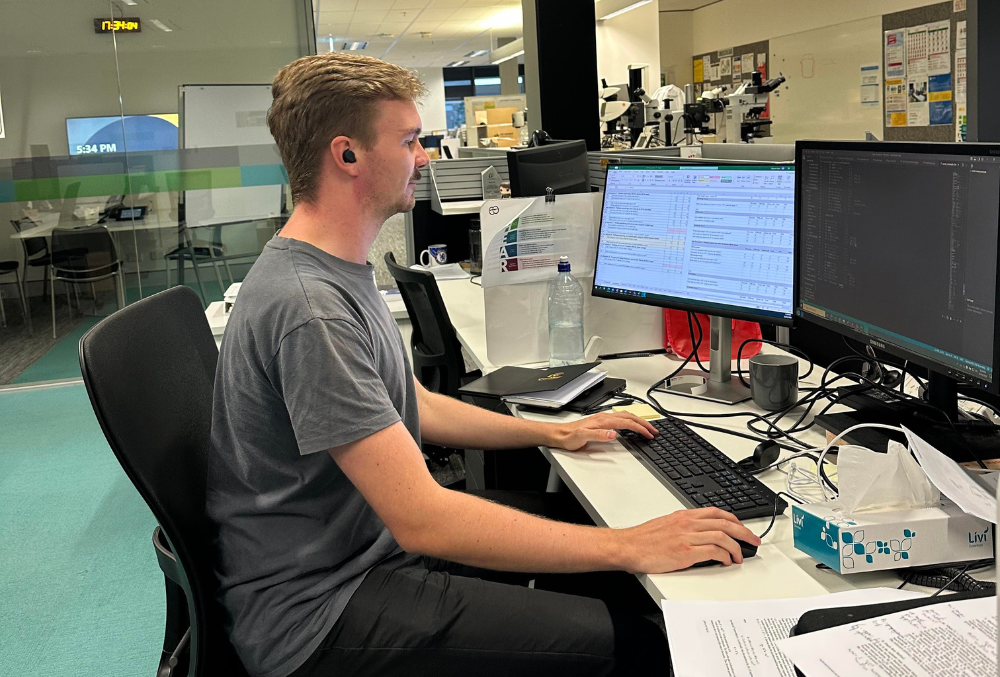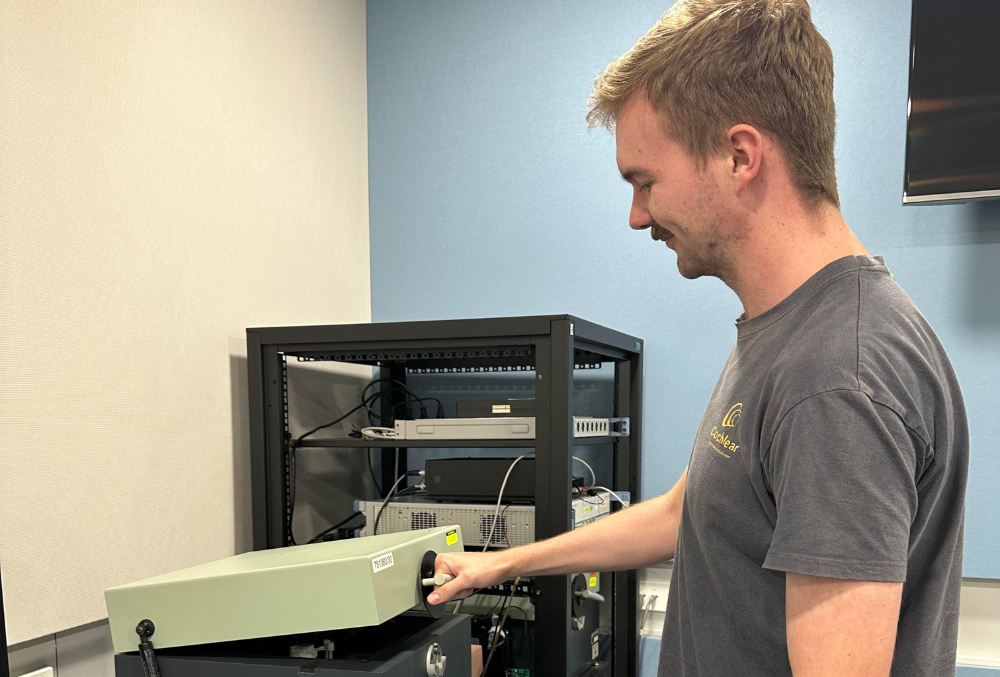Cochlear
Hayden Keers
Summer Student (Digital Signal Processing) at Cochlear
Bachelor of Engineering Honours at University of Technology, Sydney (UTS)
7.00 AM
My alarm goes off.
7.30 AM
My sixth alarm goes off. I’m finally ready to leave my bed.
I have a quick shower, usually accompanied by music. This helps me to get hyped up for the day. I usually sing quite loud—my apartment has brick walls, so hopefully the neighbors can’t hear me.
8.00 AM
By 8.00 am, I’m leaving the house to walk to the station. Muesli bars are my breakfast of choice because I can never get out of bed early enough to sit down to eat. On the Epping line, I have a solid half hour to get my laptop out and look at some emails to get me ready for the day.
9.00 AM
Two trains and a metro later I arrive at work.
Lunch goes in the fridge then I make my first caffeinated beverage of the day, Ceylon tea (courtesy of Cochlear). The first activity of the day is to go bother my co-workers, who are probably already being productive. Stand-up is at 9.45 am, so it’s unlikely I’ll get any work done before then. We’ll usually chat about music, PC games, or interesting programming things we’ve found.
9.45 AM
Every morning is the DSP team stand-up meeting—an artifact of our sprint-based project management. I share with the team my successes and blockers, and they pass on their DSP wisdom to help me get through my tasks for the day. Often, I ask for help on tests that are failing or am trying to find someone relevant to talk to about a specific piece of 20-year-old code.
10.00 AM
With the stand-up over, I get started on my first task for the day. I’ve been tasked with re-routing a part of our signal path so that we can better debug some of our existing algorithms. Our DSP code is written in assembly, so I open Visual Studio Code and start typing. Assessing the signal path in DSP code involves understanding the flow of data form variable to variable, and the operations performed on that data along the way. In the case of our Sound Processors, this means the flow of data from the microphone inputs to the RF Coil output.

There’s always a selection of devices available for me to test on, and loading code onto a device is a something I regularly get to do. Loading my code onto the device, and viewing the decoded output from the RF Coil, I can assess whether the sound signal is being processed correctly into different stimulation magnitudes across the implant’s 22 electrodes.
12.00 PM
Not a minute past midday, I leave my desk for lunch. Sometimes I head to the Macquarie Uni food court with my DPS co-workers, but today I’ve decided to hang out with the other Summer Students on the office balcony. We try to talk about interesting things we’ve been up to outside of work, but we generally end up talking about work.

1.00 PM
After a long lunch, I’m ready to get stuck into some more coding. But before this, I get myself a coffee from the downstairs café—necessary for pumping out some high-coverage, bit-precise test cases. We use Python for our testing framework, which gives a nice amount of variety to the programming we do. Using an assembly simulator, we can calculate what the expected output from a block of DSP code would be without having to upload it to the device, allowing us to compare it against an expected output programmatically.
From here, we can then create system tests that run on a Sound Processor (SP), digitally feeding a desired input from the computer to the SP, then using a special device to decode RF packets from the SP and send them back to the PC. This lets us verify our code on actual hardware.
2.30 PM
With a system test written, I’ll head to our verification room to run some tests. Placing the sound processor in an anechoic box, I can stimulate the device with an audio signal, and record the response. With this audio data, I can then assess if the DSP code I’ve written is working as expected and create calculable metrics to determine whether the test has passed.

3.00 PM
Test results in hand I’ll head back to my desk and chat with some of my co-workers about my results, and how to best go about quantifying results to be used as part of an automated test. There’s rarely one correct answer, so I’ll spend some time weighing up options and deciding how to best satisfy the requirements given to me.
5.00 PM
By 5.00 pm, most of my colleagues have already started heading home, so I finish off any tasks I have before packing up. I usually leave my laptop at work unless I’m really keen to research something or finish a task.
6.00 PM
Once I’m home, I’ll sit around for a little bit before getting changed for a run. Running gives me a chance to unpack my thoughts and spend some time in nature. The Bay Run is a favorite of mine, but sometimes I’ll just run around the local area. I always record my run on Strava so I can see how my pace is tracking.
7.30 PM
After a shower, I’ll hop on my computer to play some games with my mates.
11.00 PM
Time for bed!
Thinking of experiencing life as a Cochlear Graduate? Sign up to GradAustralia to receive job alerts for Cochlear